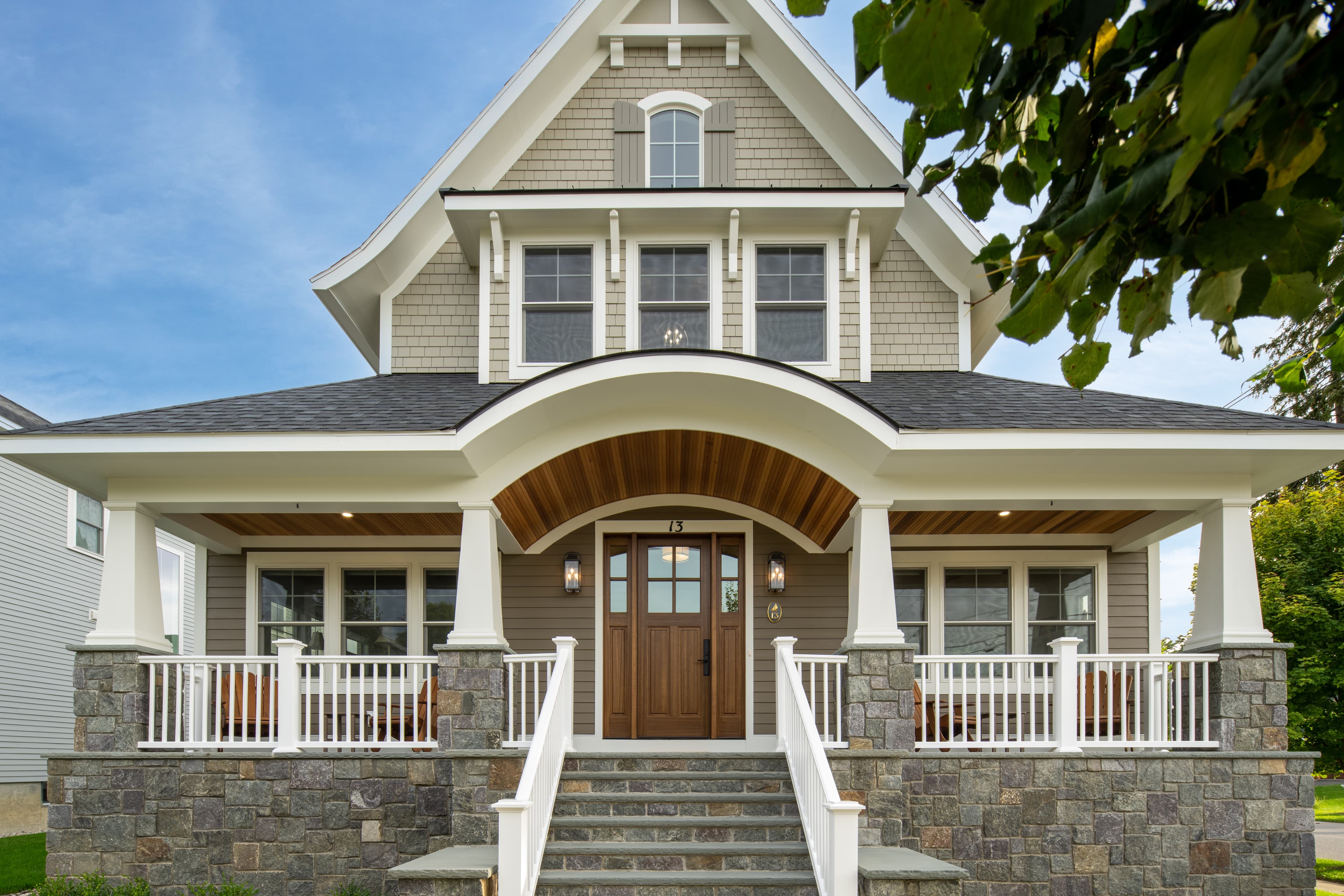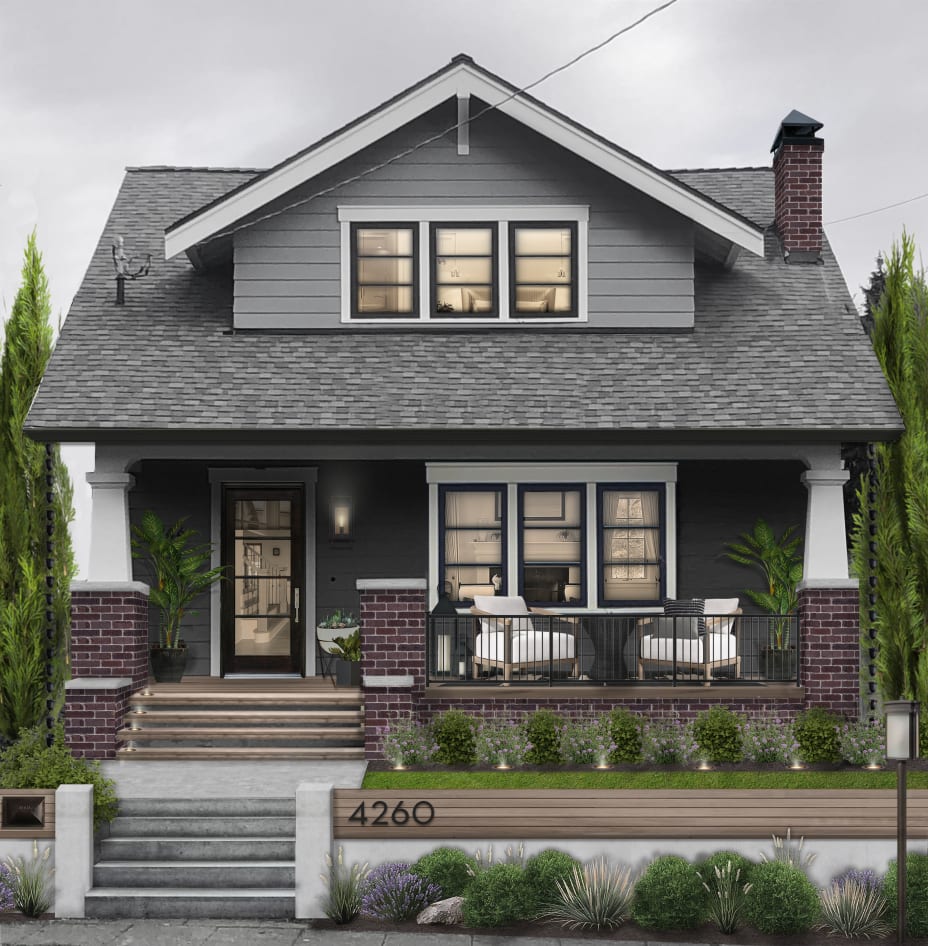The Beginner’s Guide to Building a craftsman style house
The Role of Arts & & Crafts Architects in Elevating Architectural Solutions in Residential Layout
Arts and Crafts architects greatly affect household design through their dedication to workmanship and sustainability. They prioritize handmade details and natural materials, which enhance both visual appeals and community identity. By involving customers in the design process, these architects develop unique space that reverberate with personal preferences. This method elevates questions concerning the future trajectory of residential architecture and its possible influence on community dynamics. craftsman style house. What lies ahead for this timeless design viewpoint?

The Principles of Arts and Crafts Architecture
The significance of Arts and Crafts architecture hinges on its dedication to craftsmanship and simplicity. This architectural movement emerged in the late 19th century as a feedback to automation, highlighting the value of handcrafted details and natural products. The concepts of Arts and Crafts architecture focus on capability and consistency with the environment. Structures typically include low-pitched roofing systems, broad eaves, and revealed rafters, promoting a sense of unity with nature.
Artisans played a substantial function in this style, frequently integrating ornamental aspects like stained glass, ceramic tiles, and woodwork, which reflect neighborhood workmanship. The color palette tends to be earthy and subdued, enabling buildings to mix effortlessly into their surroundings. Additionally, the style encourages open layout and public rooms, promoting a feeling of togetherness. In general, the concepts of Arts and Crafts architecture celebrate the charm of simpleness and the relevance of human connection to both nature and neighborhood.

Sustainable Practices in Residential Design
While the demand for ecologically accountable living continues to expand, lasting practices in residential design have actually obtained substantial traction amongst architects and home owners alike. Architects are significantly incorporating energy-efficient innovations and sustainable products into their designs, intending to lower carbon impacts and improve power conservation. Methods such as passive solar style, environment-friendly roofing systems, and rainwater harvesting systems are ending up being common elements of modern-day domestic architecture.
In addition, the option of locally sourced products minimizes transport discharges and sustains local economic situations. Emphasis on all-natural light and air flow not only enhances indoor air quality but also minimizes reliance on synthetic lighting and climate control systems. These lasting methods mirror a dedication to protecting the atmosphere while offering home owners with comfy, effective space. As awareness of ecological concerns grows, the integration of sustainability in property layout is poised to become a specifying attribute of contemporary architecture, led by the principles established by Arts and Crafts architects.
Personalization and Personalization in Home Design
Personalization and customization in home layout have emerged as crucial trends in action to the expanding directory wish for special living settings that show private preferences and way of livings. Property owners increasingly seek to tailor rooms that resonate with their individualities, bring about a more significant connection with their space. craftsman style house. This activity motivates architects to engage clients in the style procedure, cultivating cooperation that assures the last end result personifies the homeowner's vision
Components such as bespoke formats, custom-made materials, and customized coatings enable for a diverse variety of expressions in property style. Arts and Crafts architects play a pivotal role in this development, emphasizing workmanship and quality. Their concentrate on incorporating artistic components with performance guarantees that each home is not just visually pleasing but additionally distinctively fit to the inhabitants' demands. This focus on modification enhances the total property experience, developing areas that are both personal and enduring.
The Influence of Arts and Crafts Architects on Neighborhood Visual Appeals
As communities advance, the impact of Arts and Crafts architects considerably shapes their visual landscape. By highlighting handcrafted information, natural products, and conventional building techniques, these architects develop homes that resonate with their environments. Their designs often include regional vegetations, structures, and colors, promoting a sense of consistency in between developed atmospheres and nature.
The Arts and Crafts activity promotes neighborhood identification through building continuity. By motivating home owners to adopt comparable design principles, neighborhoods create a natural character that boosts visual charm. This building harmony not only enhances the visual experience however additionally instills a sense of satisfaction amongst locals.
The emphasis on sustainability and workmanship in Arts and Crafts architecture aligns with modern-day worths, making these layouts pertinent in modern setups. Eventually, Arts and Crafts architects contribute considerably to the general beauty and social integrity of areas, leaving a long lasting effect on their visual legacy.

Future Fads in Arts and Crafts Architecture
With a raising emphasis on sustainability and customization, future patterns in Arts and Crafts architecture are positioned to mix traditional these details craftsmanship with modern advancement - craftsman style house. Architects are most likely to focus on eco-friendly materials, using recovered timber and all-natural stone to improve the sustainability of domestic designs. The integration of clever home modern technology will become prevalent, permitting individualized living experiences without jeopardizing visual integrity
The revival of artisanal strategies will foster a restored gratitude for handmade components, such as bespoke kitchen cabinetry and custom tile job. Future designs might also mirror a focus on community-oriented spaces, encouraging interaction and connection amongst citizens. Outside living locations will certainly gain prestige, effortlessly integrating nature into the home environment. As Arts and Crafts architecture evolves, it will remain click for more info to recognize its roots while adapting to contemporary requirements, developing harmonious areas that reflect individual values and way of lives.
Often Asked Questions
What Inspired the Arts and Crafts Activity in Architecture?
The Arts and Crafts activity in architecture was motivated by a reaction against industrialization, stressing handmade quality, all-natural products, and a return to standard workmanship, aiming to produce unified, useful rooms that commemorated artistry and uniqueness.
Just how Do Arts and Crafts Architects Collaborate With Customers?
Arts and crafts architects collaborate with customers through open discussion, prioritizing personal requirements and aesthetics. They stress craftsmanship and sustainability, fostering a collaboration that integrates the customer's vision with the architect's knowledge in design and materials.
What Materials Are Typically Utilized in Arts and Crafts Houses?
Typical products in Arts and Crafts homes consist of all-natural timber, rock, and block, highlighting workmanship and natural looks. These components develop a cozy, welcoming ambience, mirroring the activity's devotion to top quality and simpleness in style.
Exactly how Do Arts and Crafts Styles Enhance Indoor Living Spaces?
Arts and Crafts designs boost interior space by advertising natural light, open floor strategies, and handcrafted information. These components promote a warm, inviting ambience, encouraging a connection in between homeowners and their environments with thoughtful, useful visual appeals.
What Are Some Famous Instances of Arts and Crafts Architecture?
Famous instances of Arts and Crafts architecture consist of the Gamble Home, Greene and Greene's masterpiece in The golden state, and the Robie House by Frank Lloyd Wright. These frameworks display handcrafted details and harmony with nature, specifying the movement's significance.